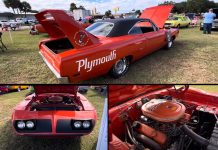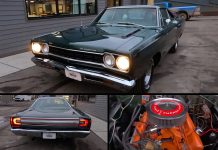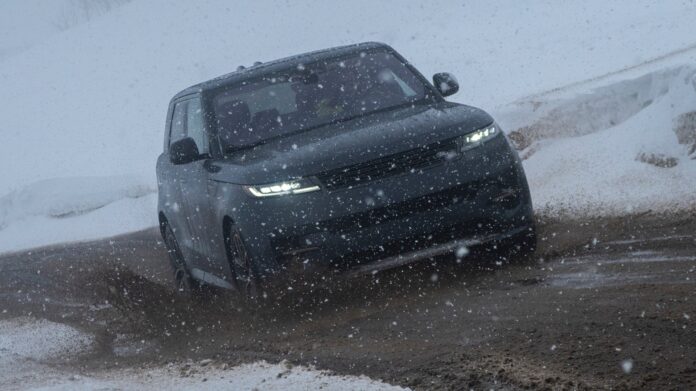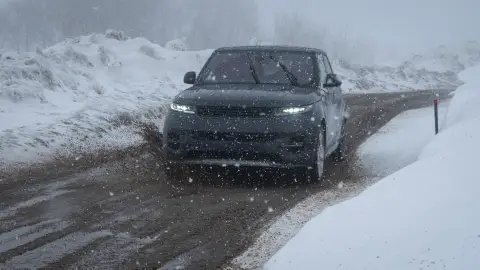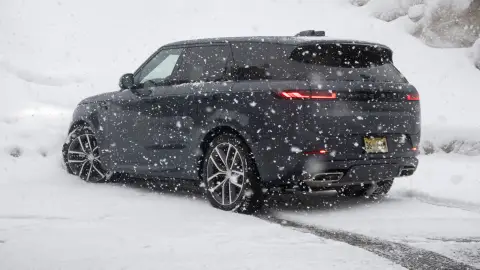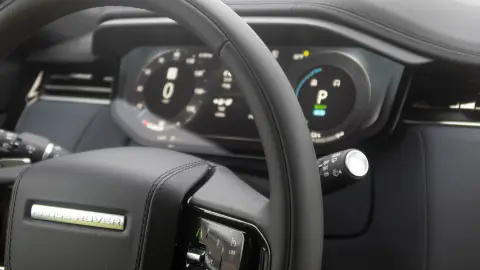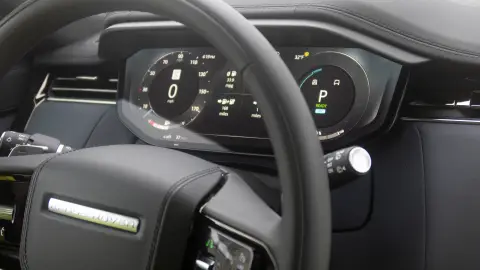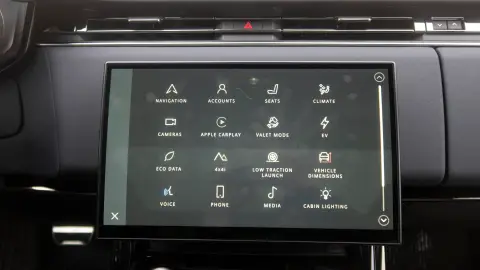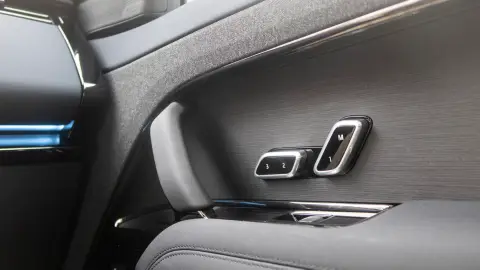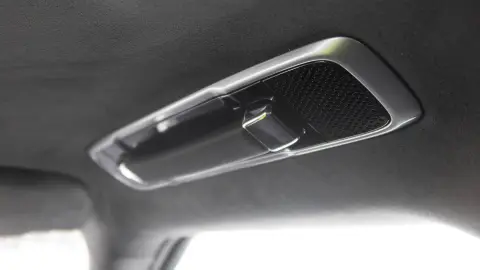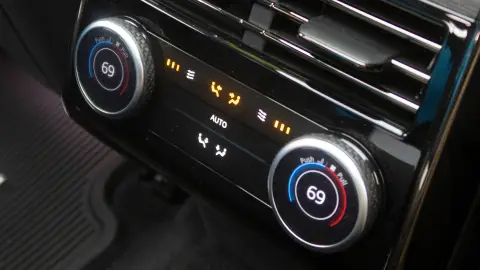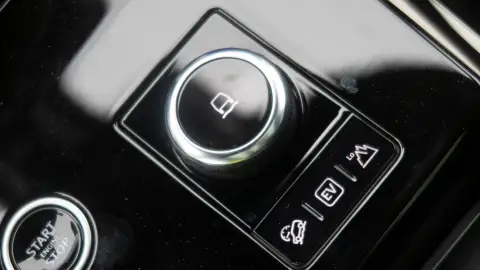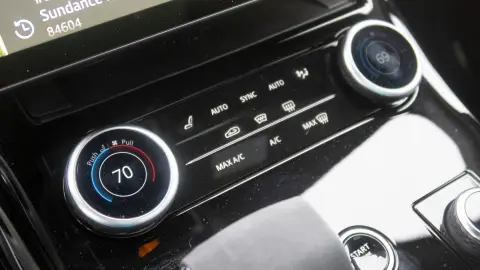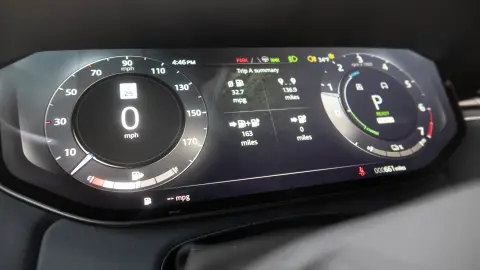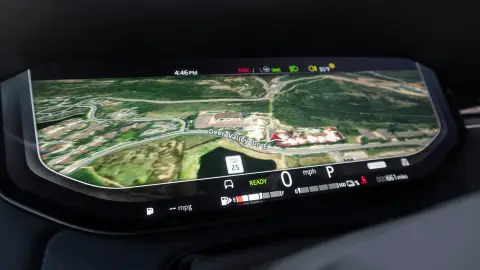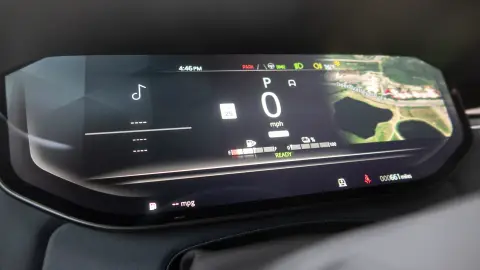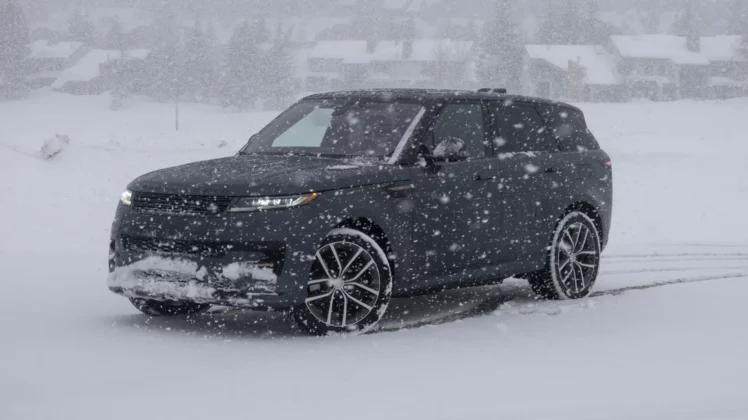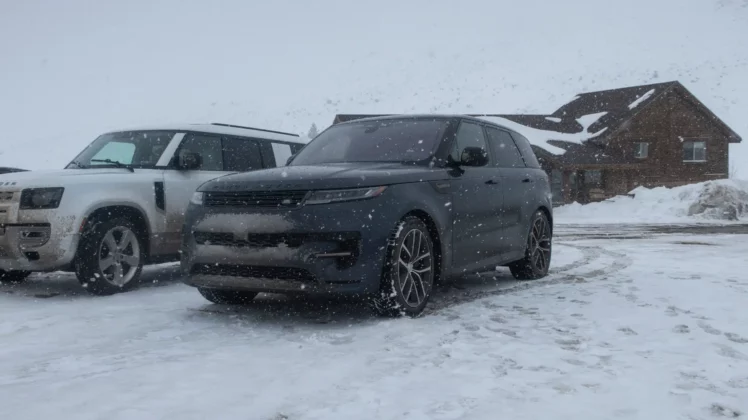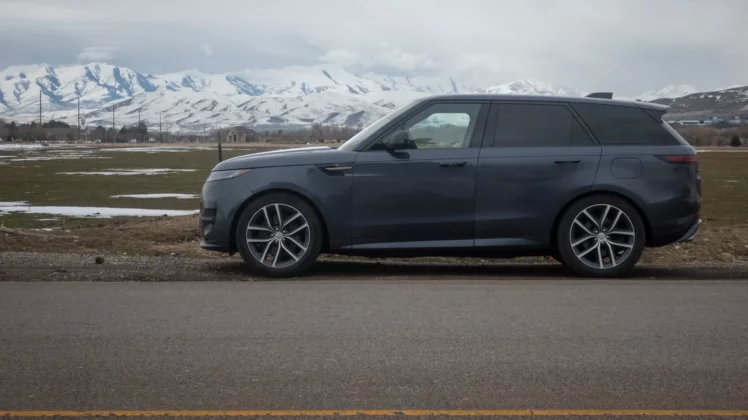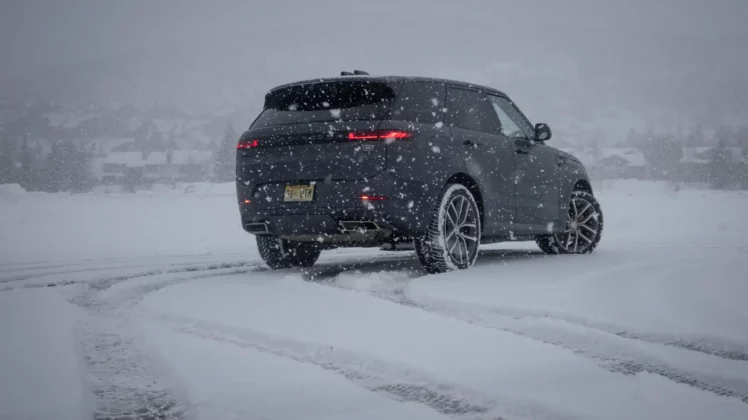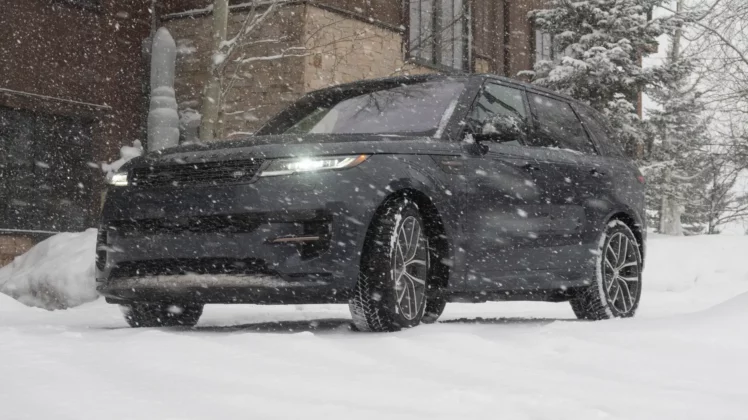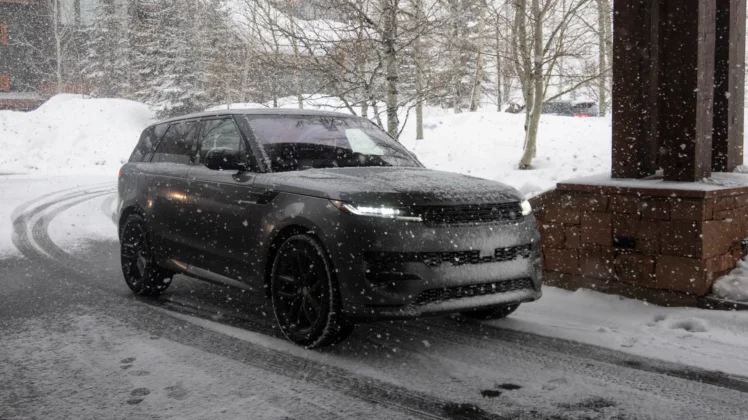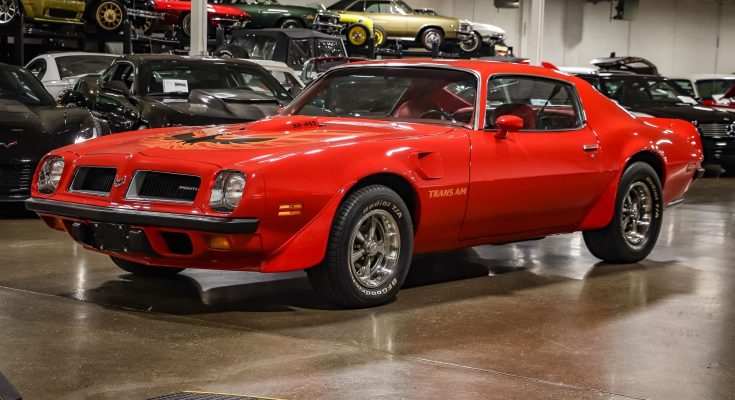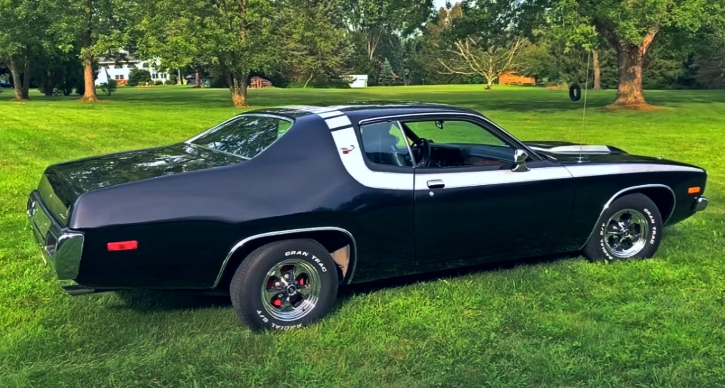The 2023 Range Rover Sport PHEV stayed sure-footed as a blizzard coated Utah’s highways and dropped visibility to a few car lengths. Rolling up to a ski resort in this thing—headlights blazing through billowing snow, engine dead-silent—had me feeling like a prince on vacation. That’s where the SUV’s token Britishism ends these days, though.
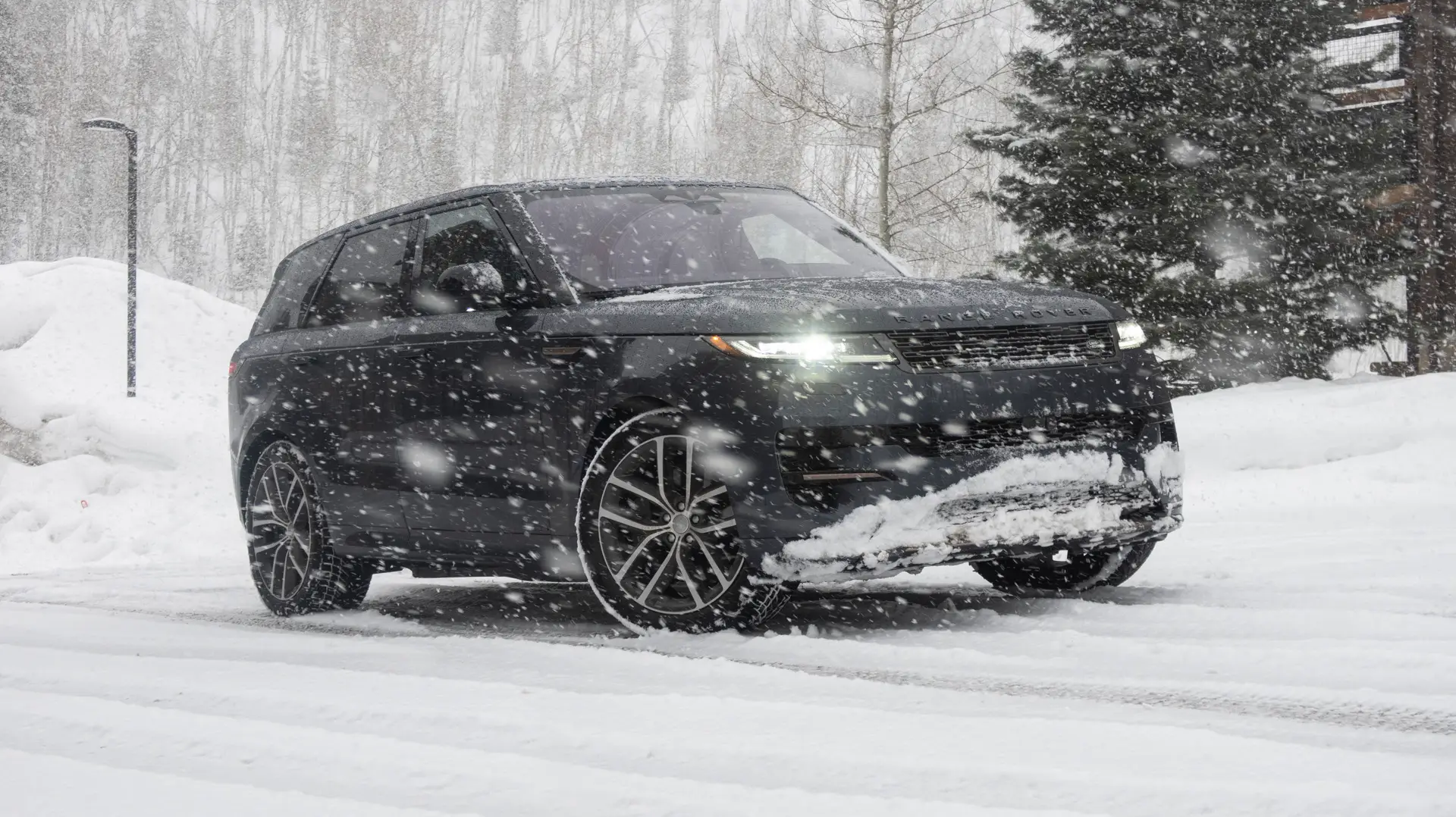
The first version of the Range Rover Sport ended production a decade ago now. The brand, and the Sport model specifically, have evolved immensely since then. Technology, efficiency, build quality, and refinement have come so far that old fans would barely recognize a new Rover. It’s hard to complain about that. I just wish the brand hadn’t scrubbed so much of the whimsy, character, and Land Rover distinctiveness off in the process of polishing up its products.
2023 Range Rover Sport PHEV Autobiography Specs
- Base price, PHEV model (Autobiography as tested) $105,675 ($109,585)
- Powertrain: 3.0-liter twin-turbo straight-six | 105-kW electric motor | 8-speed automatic | all-wheel drive
- Horsepower: 434 hp
- Torque: 406 lb-ft
- Seating capacity: 5
- Curb weight: 5,860 pounds
- Cargo volume: 53 cubic feet behind first row, 38.2 behind second row
- Ground clearance: 11.1 inches
- 0-60 mph: 5.5 seconds
- Top speed: 140 mph
- Off-road angles (where applicable): 29.7° approach | 24.5° breakover | 30.0° departure
- EPA fuel economy: TBA mpg city | TBA highway | 51 mpge combined
- Quick take: High-tech and high-class conveyance, now with a little less climate guilt.
- Score: 7/10
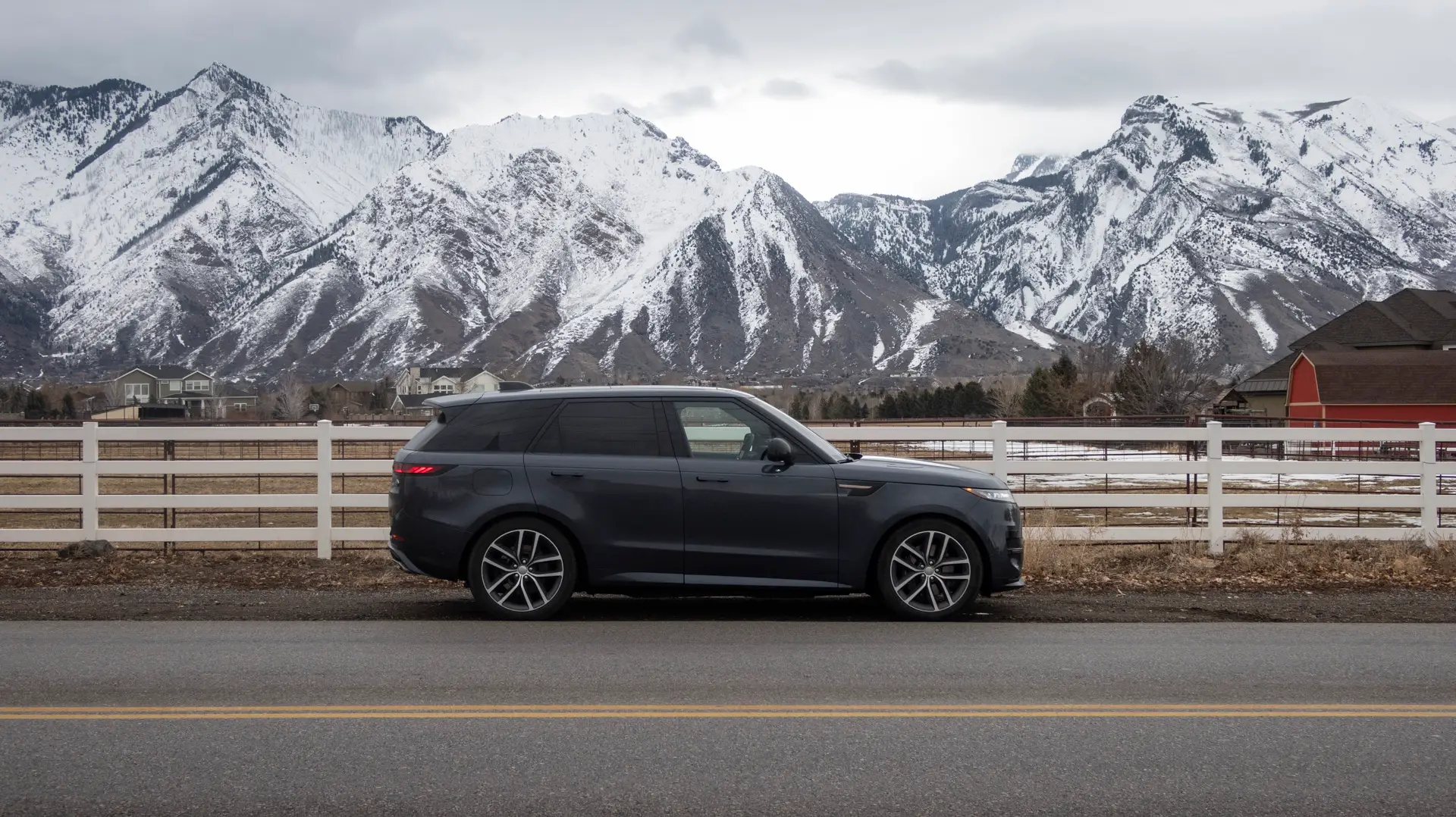
A Transporter of Gods
Range Rover has effectively been its own brand since the first ones came out in the ’70s. Though they are still technically models of Land Rover, if you’ve noticed more ads and dealer signage partitioning Range Rover on its own island above the rest of the LR fleet, it’s not your imagination.
The people marketing Range Rovers have wisely been more actively leveraging the cachet and recognizability of the brand name lately to sell a lifestyle as much as a motor vehicle. They’ve got a running start—“Range Rover” is really fun to say and pretty universally associated with being a baller. One might even call it a finisher car; a transporter of gods.
The Range Rover Sport is now in its new-for-2023 third generation, with mild hybrid, V8, and plug-in hybrid powertrains available. The PHEV I drove starts at $104,200. Here are my main takeaways from the hours I spent with this rig in heavy winter weather, on snow tires, at about 6,000 feet above sea level.
Piano black as far as the eye can see. But grab handles, plus the steering wheel and shift controls feel nice.
Interior material quality is nothing less than exceptional. Every surface looks and feels lovely; the overall cockpit design is clean. Ambient lighting is quite nice and the headliner, oh lordy, fit for a king. The infotainment system is Land Rover’s best yet without a doubt. Digital menus and gauges are all very pleasing to the eye, instantly responsive, and even customizable in some very cool ways.
Driving Experience
From behind the steering wheel, visibility is great and cockpit storage is clearly well thought out. The pickup truck-style dual glove compartments are handy, as is the secret pocket below the cup holders and the large center console that clicks into place in its up position so it could be left open without flopping around.
Land Rover’s signature front seat armrests are still there, so you can stretch out even if that console is up. And did I mention that the materials everything’s wrapped in are super nice? The spec sheet calls the optional seat wrapping I felt “perforated Ultrafabrics;” I would describe its texture as a little like the neoprene you might find on a wet suit but much softer and smoother.
A 3.0-liter twin-turbo straight-six and 105-kW electric motor claim 434 horsepower and 406 lb-ft of torque. Moving off from a stop, you feel plenty of grunt but you never feel the hybrid system toggling between electric and gasoline power in hybrid mode. Running in full-electric mode diminishes accel abilities a bit, but the SUV can run all the way up to highway speeds without activating its gas engine at all.
Unfortunately, the mileage we drove didn’t really justify a viable fuel economy test, but the RRS PHEV is supposed to be able to go about 50 miles on electricity alone and in some drive modes I hit about 70 mph before seeing the gas engine come on. Unlike many PHEVs, it has a DC fast-charging plug, so you can top it up very quickly. If you had a fast charger at work and lived about 40 miles from your office, you could potentially slow-charge overnight, zip to the cubicle, recharge at work, and drive home all without using the gasoline engine at all before doing it all over again.
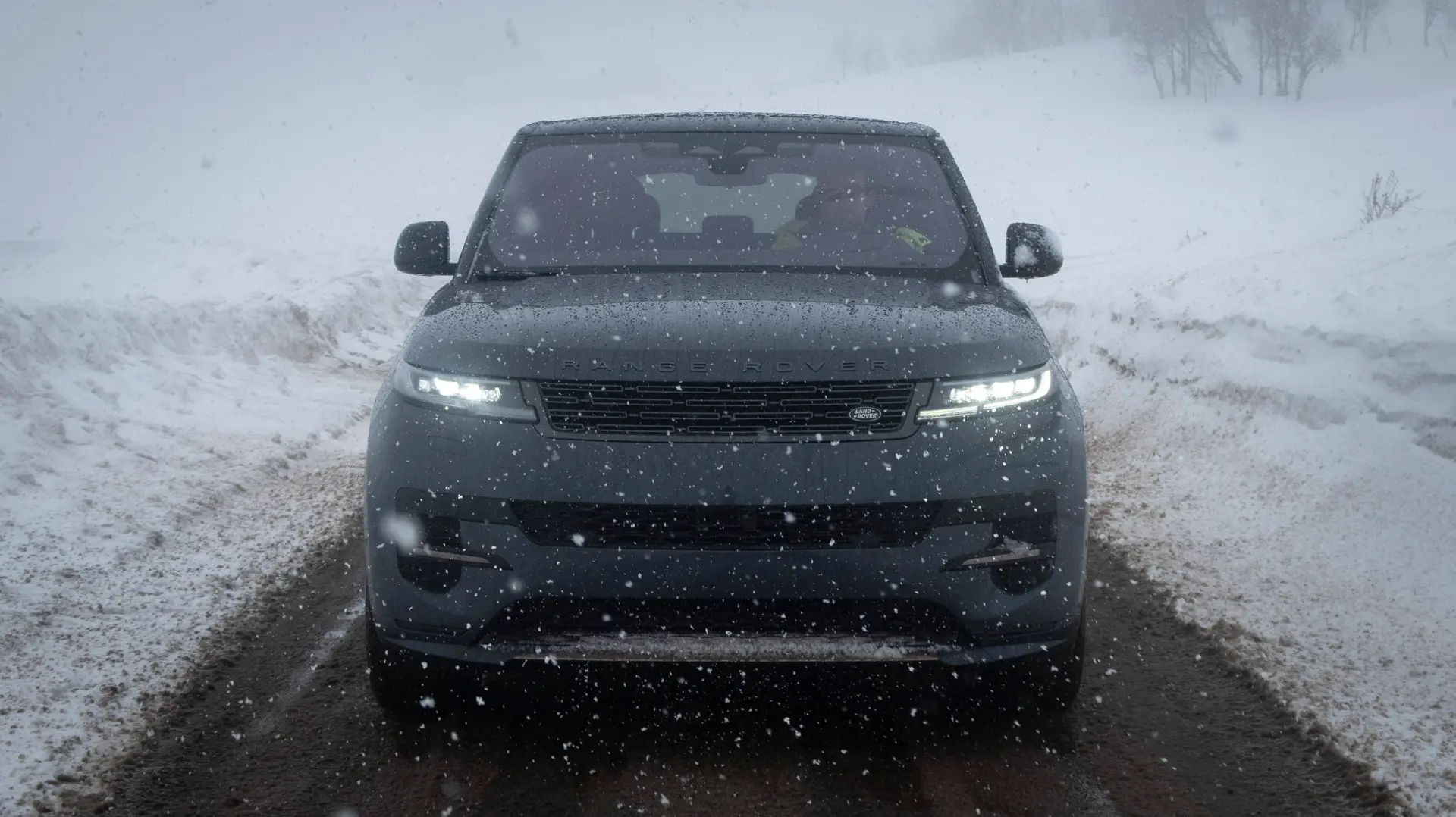
Back on our commute: The weather was so hostile that I was not inclined to do a lot of open-throttle pulls or panic lane changes. But the electric steering has a nice heft to it and the traction management system does a spectacular job keeping you feeling like you’re driving on dry surfaces even when you’re definitely not.
But despite the vehicle’s level of automation and driver-assistance tech, there is a little bit of a learning curve to how the vehicle behaves in its different modes. I got tripped up a couple of times trying to give it the beans in grass/gravel/snow mode, only to wait a full beat before pedal motion translated to propulsion. The vehicle was trying to protect me from myself, maybe a little excessively sometimes.
Over gross roads, including rutty dirt, the suspension allows for a remarkably smooth ride even at a good clip. The vehicle feels fairly large but not unwieldy or unstable. The Range Rover Sport was never really a truck but now it doesn’t even feel like a distant cousin of those old, straight-axle 4×4 Rovers.
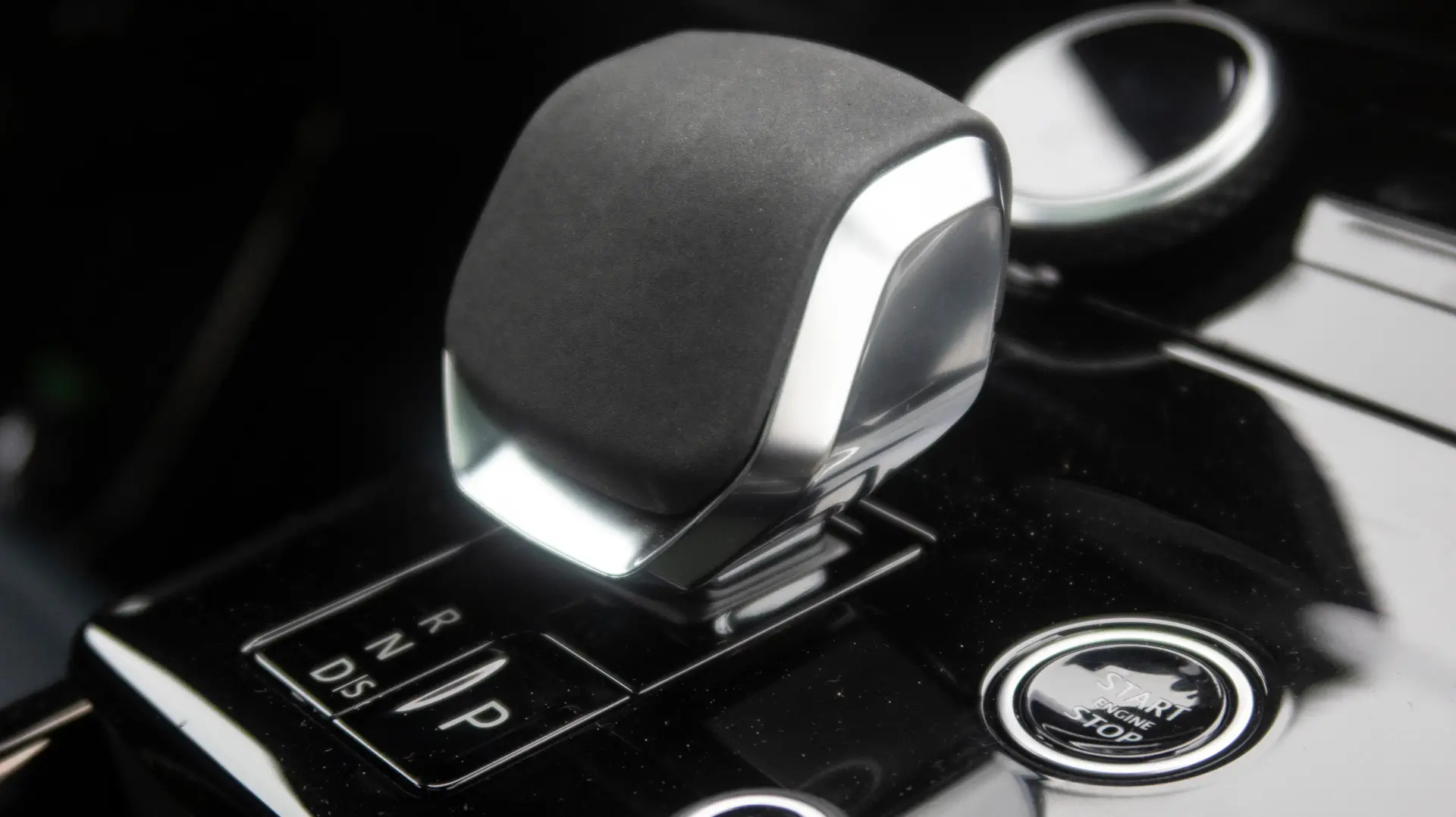
The parking cameras were able to keep working in the sloppy wetness thanks to little washers mounted near them. And unlike older Rovers, the resolution on them is now crystal clear.
Classy but Not Characterful
Unlike older Rovers. You may have noticed that theme’s been invoked a couple of times in this story. And that brings us to where the Range Rover Sport comes up short—in becoming sleekier and super modern, the new RRS’s design is largely devoid of personality.
Gerry McGovern’s disdain for old-school SUV aesthetics is once again abundantly apparent in this thing. He’s been the main man behind Land Rover’s looks for quite some years now, and you can easily find quotes of his along the lines of “retrospective bad; futuristic good” but I don’t even have to cite one because when’s the last time you saw a Rover that looked anything like a truck? Even the Defender is barely brawny or brick-esque.
I know—it’s such a bum cliché to see a car nerd complaining that a new car looks too new. But consider this: Land Rover distinguished itself among competitors and blossomed into a status symbol through the ’90s and ’00s, while its products were objectively junky, rough-riding, and notoriously unreliable. How? Why? Because they were just cool. The British gentleman explorer vibe was palpable and made riding around in pre-Discovery 5 Rovers inherently fun.
“I always feel like we’re on safari in this thing,” a friend once told me while we crept through traffic in my old Discovery 1. Even the first Range Rover Sport came out with strong whiffs of that adventurous purposefulness with chunky switchgear and a big yellow button by the traction control knob. And now, the only hints of that left are in the 4x4i display mode on the Range Rover Sport’s screen and, like everything digitally projected, that just feels kind of fake.
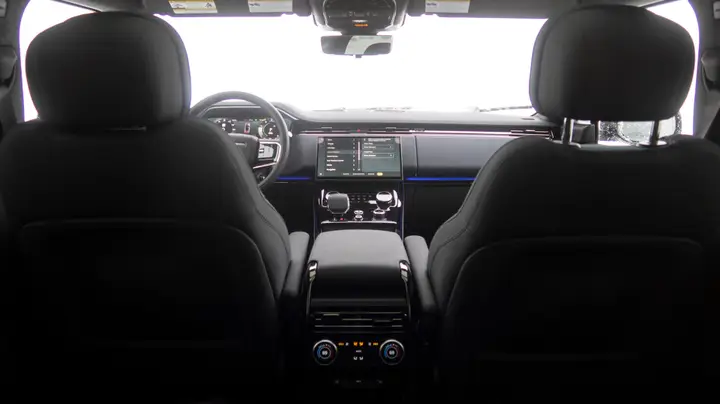
All this to say, I just can’t help but lament the fact that the new Range Rover Sport cockpit lacks the soulfulness and vitality that kept Land Rover’s relevance percolating for so long. This new version is nice to sit in and nice to drive, but nothing about it says “right, this is a Land Rover innit.”
Wretched weather was not a problem on our test drive. The retractable door handles kept working, the floormats shrugged off mud, and even the vehicle’s suite of cameras and sensors didn’t seem to mind the buckets of snow coming down. Andrew P. Collins
The Competition
In the marketplace, the Range Rover Sport is an ultra-premium and sizable, but not huge, SUV. You get very comfortable seating for four (viable for five) and decent cargo room behind the second row but no rumble seat in the way-back. This version being a plug-in hybrid puts it into a smaller sub-category of luxury sport utility rigs with fuel efficiency that’s at least not ghastly.
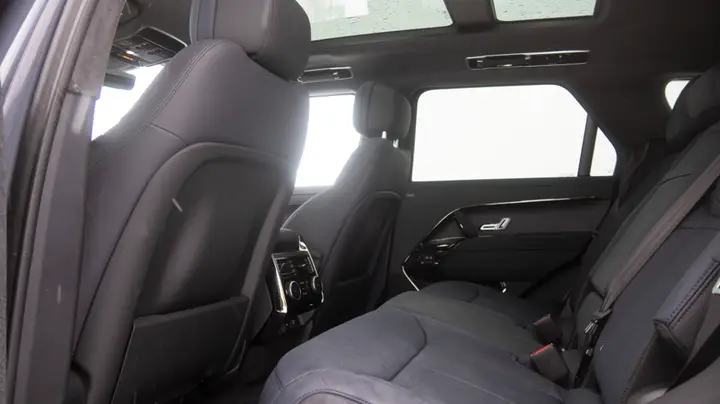
Some other vehicles in this orbit include the BMW X5 xDrive45e which costs less money and is perhaps a hair less luxe but likely more engaging to drive, the exceptionally well-made and exceptionally quick Porsche Cayenne E-Hybrid, the very Swedish, Apple-aesthetic Volvo XC90 Recharge, the lower class but adventure-y Jeep Grand Cherokee 4xe, and the upcoming plug-in version of the Mercedes-Benz GLE. The Acura MDX used to be available as a hybrid, but not anymore.
Value/Verdict
Out of that lineup, the Range Rover Sport is probably going to feel the most opulent, and the RR brand name does have some special sizzle to it. Luxury items are hard to gauge the value of because they’re innately overpriced—you want a good value, go grab a used Honda. But if you’re wondering “does the Range Rover Sport feel like $100,000,” I would say it does. In that sense, the value is there.
You don’t have to be a Land Rover fan to get into this thing—which I guess is exactly why the design has evolved so far away from the old explorer energy I was talking about earlier. It’s a very luxurious and classy method of conveyance that clearly has all the bad-road capabilities you’re going to need, and it’s going to be cool to see what kind of range folks can squeeze out of this new PHEV model. After all, fuel efficiency is usually the best automotive feature you can have when it’s time for a real adventure.



